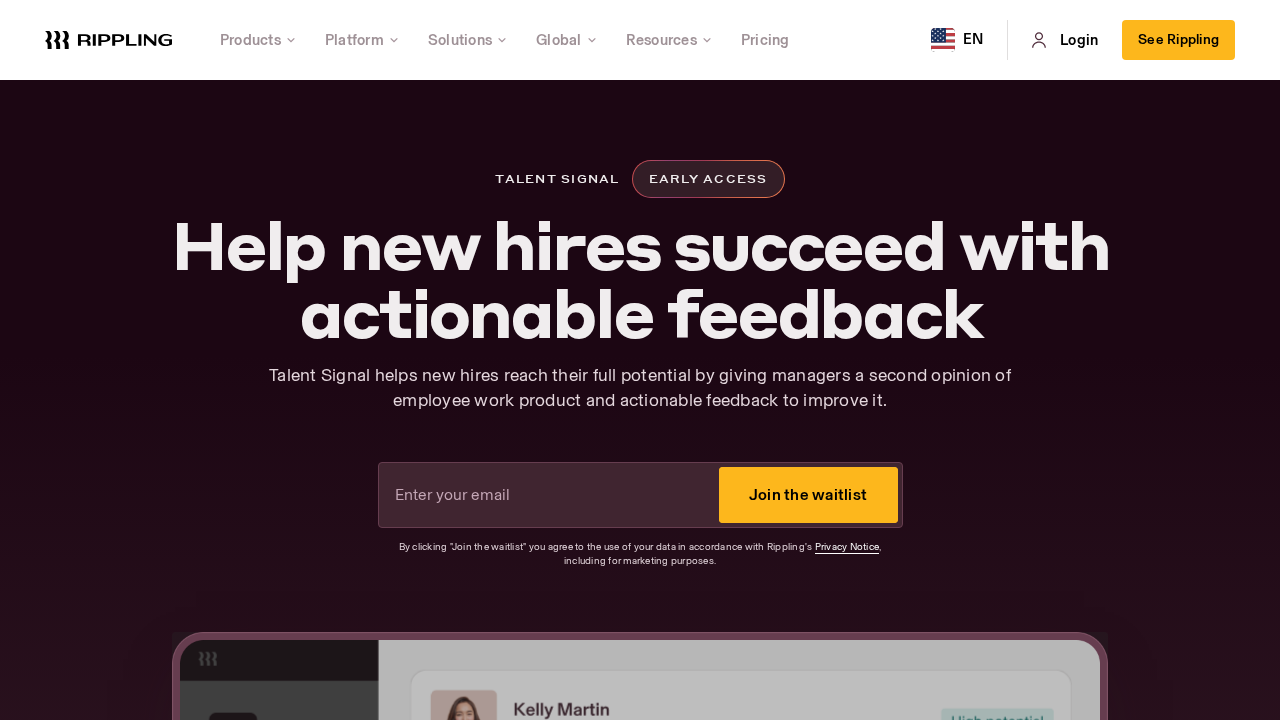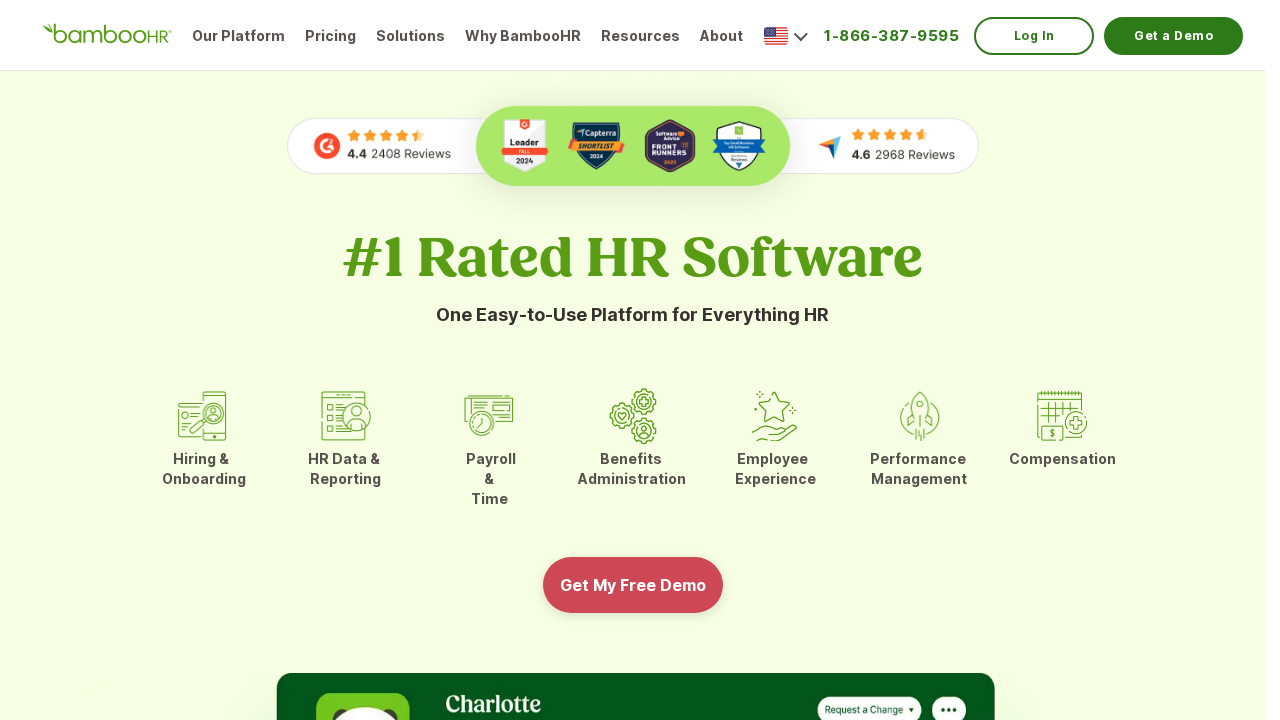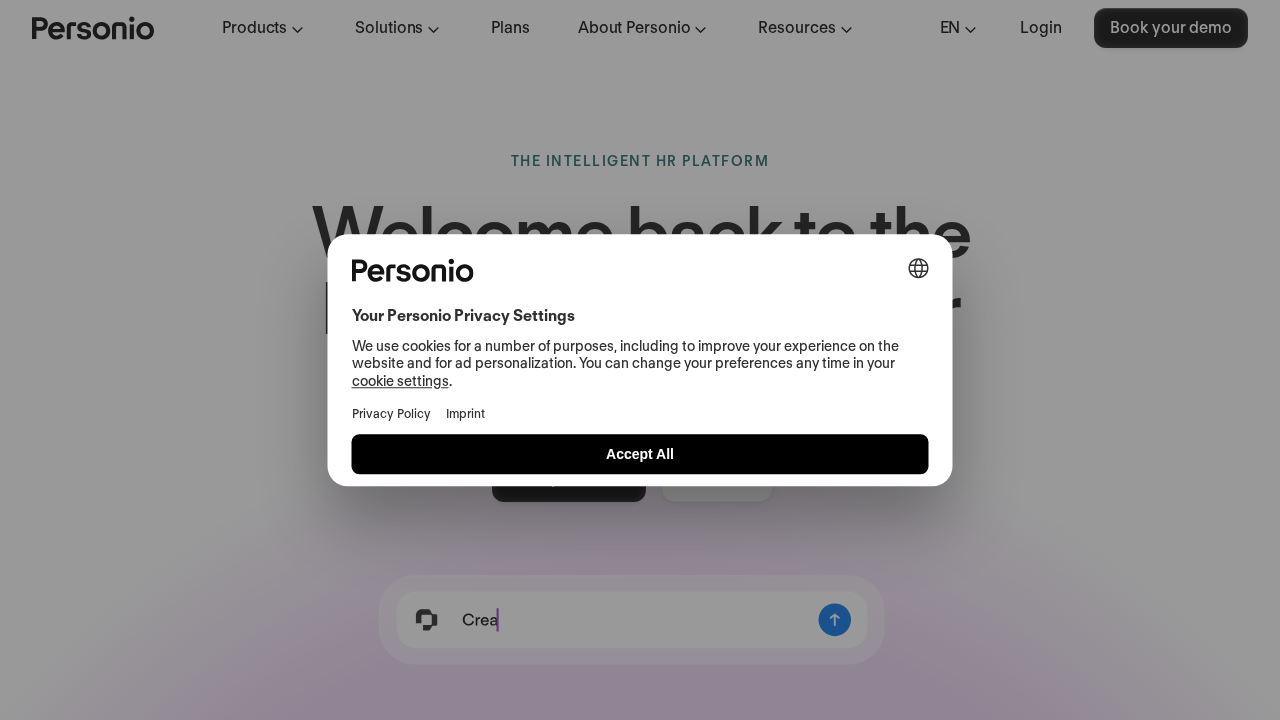Top 5 AI Tasks That Save HR Teams Time
on Septiembre 4, 2025
In today’s fast-paced world of Human Resources, the demands on HR teams are higher than ever. Managing employee wellness, optimizing recruitment pipelines, and handling mountains of paperwork can feel overwhelming. But what if AI-powered tools could lighten the load? With generative AI, HR professionals can stop spending their days on tedious administrative tasks and start dedicating more time to building better employee experiences and workplace strategies.
This blog dives into the Top 5 AI Tasks That Save HR Teams Time, featuring some game-changing tools on the market. We compare solutions like Rippling Talent Signal, BambooHR, Personio, and Gusto, while saving the best for last: Moodbit Copilot. By the end, you’ll discover how these tools stack up and why Moodbit stands out as the ultimate solution for streamlining HR operations and fostering employee satisfaction.
Top apps:
1. Moodbit Copilot
2. Rippling Talent Signal
3. BambooHR
4. Personio
5. Gusto
Moodbit Copilot

The main purpose of Moodbit Copilot is to revolutionize HR operations by leveraging generative AI for instant insights, automations, and chat support. It enables HR teams, team leads, and SMBs to turn people data and documents into actionable strategies, freeing up time from manual processes and empowering focus on people-centric efforts. The app integrates multiple functionalities, ranging from conversational analytics to document intelligence and workflow automation, delivering unparalleled support across all HR functions while scaling HR’s impact efficiently.
Pros
- Conversational data access & analytics: With its natural-language interface, users can simply ask questions like “How is employee sentiment trending this quarter?” to receive immediate, visually engaging answers and charts, eliminating the need to scan dashboards or learn complex BI tools.
- Intelligent document handling: Easily analyze documents such as contracts, survey reports, and PDFs by uploading them to receive fast summaries, extracted metrics, and recommended actions — saving hours of manual labor.
- 24/7 HR chatbot support: Employees can gain instant responses regarding policies, benefits, or processes anytime, significantly reducing the burden of repetitive HR inquiries and enhancing employee satisfaction.
- Integration & automation: Seamlessly connects with popular platforms like Slack, Microsoft Teams, Google Workspace, SAP, and others to automate workflows, report generation, meeting summaries, and survey follow-ups — all in one place.
- Prioritized people actions: Moves beyond raw data to generate specific, tailored recommendations, strategic talent-management plans, and prioritized next steps to drive real business impacts.
- Scalable for small HR teams: Enables small HR teams to manage workload efficiently for larger workforces without compromising service quality.
- Enterprise-grade readiness: Offers strong data security measures, compliance features, and privacy controls that align with enterprise requirements.
Use Cases
- On-the-go analytics: HR managers can access critical wellbeing and engagement trends with conversational queries during meetings or business decision-making moments.
- Policy improvement: Using data extracted from surveys and documents, HR teams can develop employee-friendly policies and aligned action plans that address specific workplace challenges.
- Streamlined employee support: Whether it’s a remote or hybrid workforce, employees can rely on the bot for quick information resolution related to benefits, onboarding, and processes, boosting experience and satisfaction.
- Workflow automation: Automate repetitive tasks like survey distribution, report creation, and meeting summaries, giving HR professionals more bandwidth for people strategy activities.
- Enhanced collaboration: With integrations into Slack, Microsoft Teams, and Google Workspace, HR teams avoid tool-hopping and centralize knowledge and operations in platforms they already use.
Cons
- Initial setup of integrations may require technical familiarity for full functionality.
- Advanced customization options could take time to master for non-technical users.
Rippling Talent Signal

Short description: Rippling Talent Signal is an AI-driven tool designed to assess and provide insights into the performance of new hires during their first 90 days. It evaluates work output data from platforms like Github (engineers), Salesforce (sales), and Zendesk (support reps) to generate categorized signals and detailed reports for managers, focusing on coaching and calibration.
Pros:
- Offers performance insights within the first 90 days, accelerating feedback loops for new hires.
- Processes work product data directly to reduce subjective biases in evaluations.
- Includes detailed, transparent reports with concrete examples linked to source systems, aiding manager-employee discussions.
Cons:
- Limited scope, focuses only on the onboarding phase (90 days) without addressing comprehensive HR challenges like sentiment analysis or wellbeing trends.
- Lacks conversational analytics or natural language query capabilities, requiring managers to rely on predefined outputs rather than interactively exploring data.
- No integration or automation for HR workflows, such as generating actionable strategies or connecting to broader collaboration tools like Slack or Microsoft Teams.
- Overemphasis on technical work product data, making it less applicable for roles where contributions are qualitative or collaborative in nature (e.g., strategy-related or creative roles).
- Does not include a 24/7 chatbot for reducing repetitive HR inquiries, limiting its capacity for employee self-service.
- Requires manager discretion and manual input to interpret and apply developmental feedback, reducing its potential automation value.
- Misses broader enterprise readiness features such as advanced security, compliance options, and partnerships for seamless ecosystem deployment.
- Early Access stage implies experimental limitations and potential inaccuracies, compared to mature AI-based HR systems.
BambooHR

BambooHR is an all-in-one HR platform offering solutions like HR management, payroll, and benefits administration. It aims to unify disconnected workflows, making HR tasks efficient and contributing to business goals.
Pros
- Comprehensive HR features like payroll, benefits administration, and employee database management.
- Ease of use, designed with intuitive tools for non-technical users.
- Award-winning workplace culture and strong support reputation.
Cons
- Limited capability for advanced analytics or real-time data insights for proactive HR decision-making.
- No AI-driven automation for reducing repetitive tasks and manual efforts like employee surveys or data reporting.
- Lacks integration capabilities with communication tools like Slack or Microsoft Teams to streamline workflows.
- No 24/7 HR chat assistant to handle repetitive employee queries, leading to potential inefficiencies.
- Focuses more on traditional HR processes, with less emphasis on translating employee sentiment data into practical actions or recommendations.
Personio

The Personio app is a cloud-based HR management software designed to simplify core HR processes like attendance, document management, and payroll. It provides digital personnel file storage, recruiting modules, and manual time tracking capabilities.
Pros
- Secure digital personnel file storage for managing a wide range of documents (e.g., contracts, pay slips).
- Customizable employee data visibility and editing permissions based on assigned roles.
- Ability to assign attributes for skills and competences to employees for better querying.
Cons
- Manual time tracking is cumbersome, requiring employees to input daily hours individually, with limited automation, adding unnecessary workload.
- Approval workflows for attendance tracking lack automation and can result in additional managerial overhead depending on setup frequency (daily/weekly/monthly).
- No advanced features for analyzing or summarizing employee sentiment or engagement trends.
- Absence of conversational interfaces or generative AI capabilities to simplify accessing reports or generating actionable insights.
- Recruiting modules must be purchased as part of specific plans and cannot be added individually, limiting flexibility.
- No integrations for collaborative platforms like Slack or Microsoft Teams, which are helpful for centralized HR tasks and communication.
- Options for addressing repetitive HR queries are limited, with no chatbot functionality to handle frequent requests.
- No workflow automations for generating tailored recommendations, scaling operations, or preemptive employee engagement strategies.
Gusto

Gusto is an online tool designed for small and medium-sized businesses to simplify payroll and HR processes. It offers features like payroll automation, tax filings, employee benefits administration, onboarding tools, and integrations with multiple platforms to help streamline HR operations.
Pros
- Automated payroll processing, reducing manual effort.
- Integrated tax filings across all U.S. states to ensure compliance.
- Affordable employee benefits administration with no extra broker fees.
- User-friendly interface for small businesses.
Cons
- Focused primarily on payroll and tax filing, lacking advanced people analytics or actionable insights on employee engagement.
- No conversational data features or dynamic tools for analyzing sentiment or generating strategies.
- Limited emphasis on workflow automation outside of payroll-related tasks.
- Dependence on rigid plans with incremental pricing based on features and scaling, which can limit growth flexibility.
- Lacks 24/7 HR chatbot support, leaving repetitive requests unresolved outside of working hours.
Conclusions:
While tools like Rippling Talent Signal, BambooHR, Personio, and Gusto each offer useful HR functionalities, they often fall short in delivering the kind of end-to-end automation and actionable insights HR teams need to truly thrive. From limited AI-driven analytics to the lack of conversational interfaces, these tools are useful but ultimately narrow in their scope for solving repetitive HR challenges.
That’s what makes Moodbit Copilot a game-changer. Featuring a revolutionary combination of conversational data analytics, document intelligence, workflow integrations, and a 24/7 HR chatbot, it empowers HR teams to not only save time but create meaningful impact. By turning raw people data into actionable strategies and automations, Moodbit goes beyond streamlining operations—it helps HR professionals strategically influence wellbeing and retention metrics.
For small and mid-sized businesses looking to amplify productivity, improve employee satisfaction, and accelerate decision-making, Moodbit Copilot is the clear choice. So why settle for tools that only scratch the surface when you can adopt a solution that transforms your HR game? Ready to try it out for free and see the future of HR in action?


Leave a comment